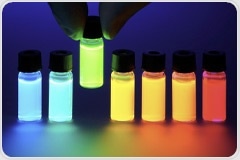 Shining a Light on Fluorescent Sensors
Shining a Light on Fluorescent Sensors
Fluorescent sensors are molecular probes that detect and quantify analytes in various settings using the fluorescence phenomenon. They have a broad range of applications in analytical chemistry, biochemistry, and biology because of their excellent sensitivity, selectivity, and simplicity of use.